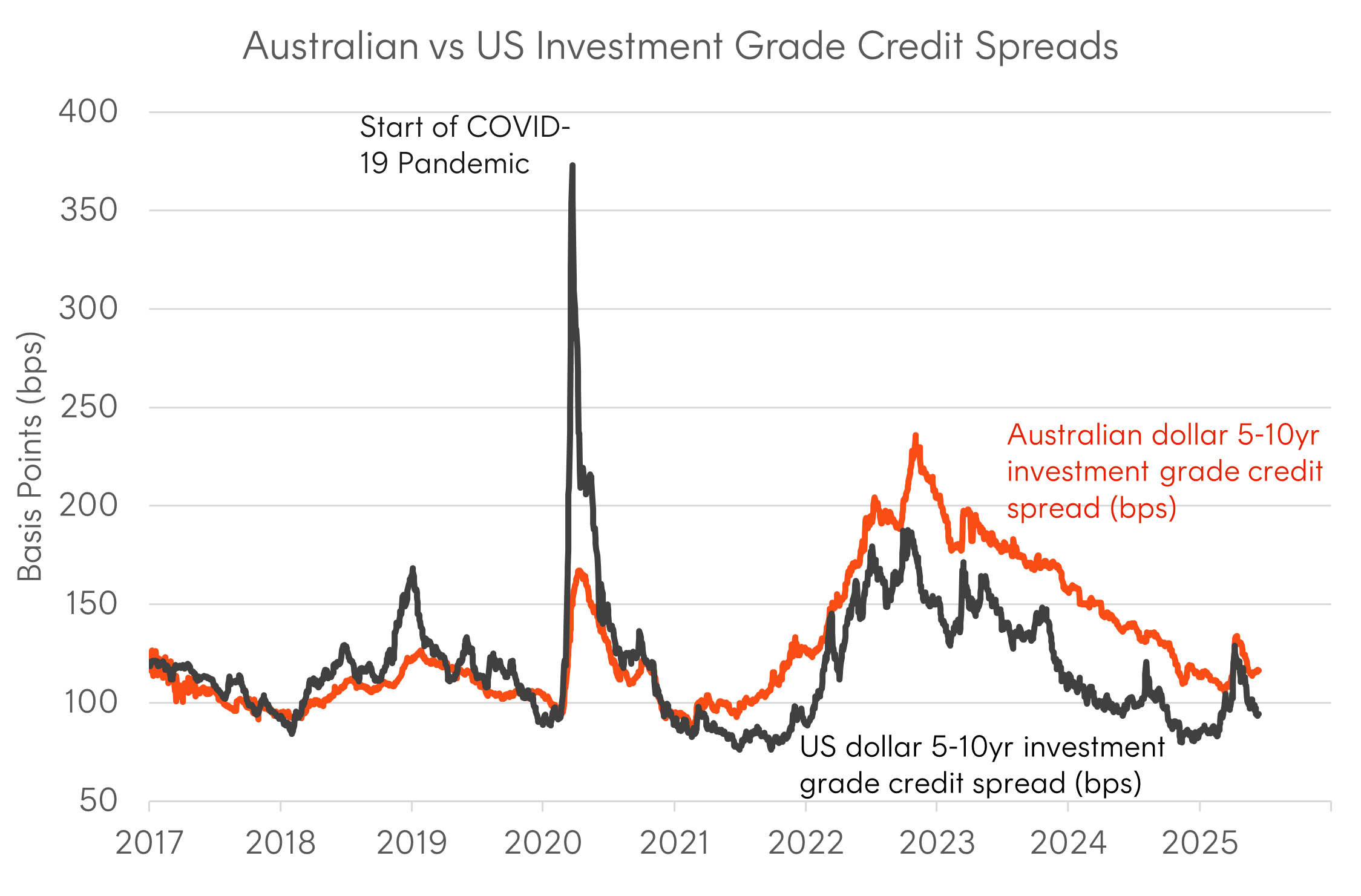Why more income could be made from this Aussie asset class
In today’s market, investment opportunities that can deliver both a solid income and a strong total return performance are hard to come by.
This is particularly the case given the RBA is continuing to cut interest rates, and, in the case of investors looking for fixed income, the Australian bank hybrid market being wound down1.
Yet Australian investment grade corporate bonds have delivered just that.
Australian investment grade corporate bonds have been in what many would call a ‘perfect’ environment for the last two years. That’s because credit spreads have steadily narrowed over the period, thanks in large part to an improved macroeconomic outlook and strong corporate fundamentals2.
But as we’ll show you, tight credit spreads are not the only reason this asset class is making waves among investors hungry for income.
What’s been driving strong returns in Australian credit?
To understand why credit has been performing well, we first need to understand credit spreads.
Credit spreads refer to the difference in yield between two bonds of similar maturity but different quality. The spread is the additional yield an investor earns for taking on the additional risks that come with investing in a lower-rated bond.
Spreads are typically measured against a risk-free benchmark – for instance, a government bond or a comparable swap rate. For investors in fixed income (even those who access the asset through ETFs), spreads can have a significant impact on your returns.
A compression (or decline) in credit spreads implies a more bullish sentiment among investors and may also indicate that the creditworthiness of borrowers (i.e. the companies issuing the loans) has improved. Since 2023, Australian dollar-denominated corporate bond credit spreads have compressed further than their US dollar-denominated counterparts.
Beyond the topic of spreads, it’s important to note that the macroeconomic backdrop in Australia is relatively strong.
The RBA is, as of writing, able to cut interest rates with a backdrop of falling inflation and steady unemployment levels. Investment-grade corporations are also in good financial health with default rates sitting relatively low, according to figures compiled by major ratings agency Fitch Ratings3.
Finally, offshore investors (particularly from Asia) have been showing strong appetite for corporate bonds. Provided this demand continues, then spreads and valuations are likely to follow suit.
Why is this outperformance likely to continue?
As the chart below shows, Australian dollar-denominated investment grade corporate bond spreads have compressed significantly, but they actually remain above their historical lows.

Secondly, in the current environment, the RBA is trying to bring interest rates down to a neutral level. That is, a level that generates economic growth but doesn’t cause a spike in inflation. If it can do this successfully, credit spreads could grind even lower, adding to the outperformance we’ve already seen.
Third, provided there isn’t a massive default (bankruptcy) wave among large Australian corporates, confidence in those borrowers should remain. Even if spreads don’t compress much further, the quality of Australian corporations means that investors may still flock to these assets.
As hybrids wind down, could investors consider high quality credit?
Investors who have been using hybrids as an option to generate excess income continue to look for a place to park their cash as the hybrids market sunsets.
As of 25 June 2025, the bulk of the remaining bank hybrid market pays between 7-8% in running yield4. However, with bank hybrids due to roll off as a result of regulatory changes, investors are increasingly exploring more stable, income-generating options – such as investment grade corporate bonds.
One avenue for investing in these investment grade corporate bonds is through Betashares Interest Rate Hedged Australian Investment Grade Corporate Bond ETF (ASX: HCRD).
HCRD provides investors with exposure to 50 local investment grade corporate bonds through an index5. Then, bond futures contracts are sold with the aim of substantially reducing the interest rate risk that investors may face.
T Government bond yields are typically the largest contributor to the volatility of fixed rate corporate bonds. The hedging strategy essentially aims to mitigate this effect. While it may sound complicated, its results have shown that the strategy has worked so far – returning 9.24% p.a. from its inception in November 2022 to 30 June 20256.
But best of all, HCRD pays a monthly distribution. This makes it a potentially attractive idea for investors who want a regular income option when their hybrid holdings are called.
Choose your own duration
All of this is to say that there is still potentially income to be made in Australian investment grade corporate bonds. And given they are now accessible in an ETF on the Betashares Direct platform, there is no reason for income-hungry investors to ignore what’s on offer in this asset class.
5 topics
1 stock mentioned
1 fund mentioned

